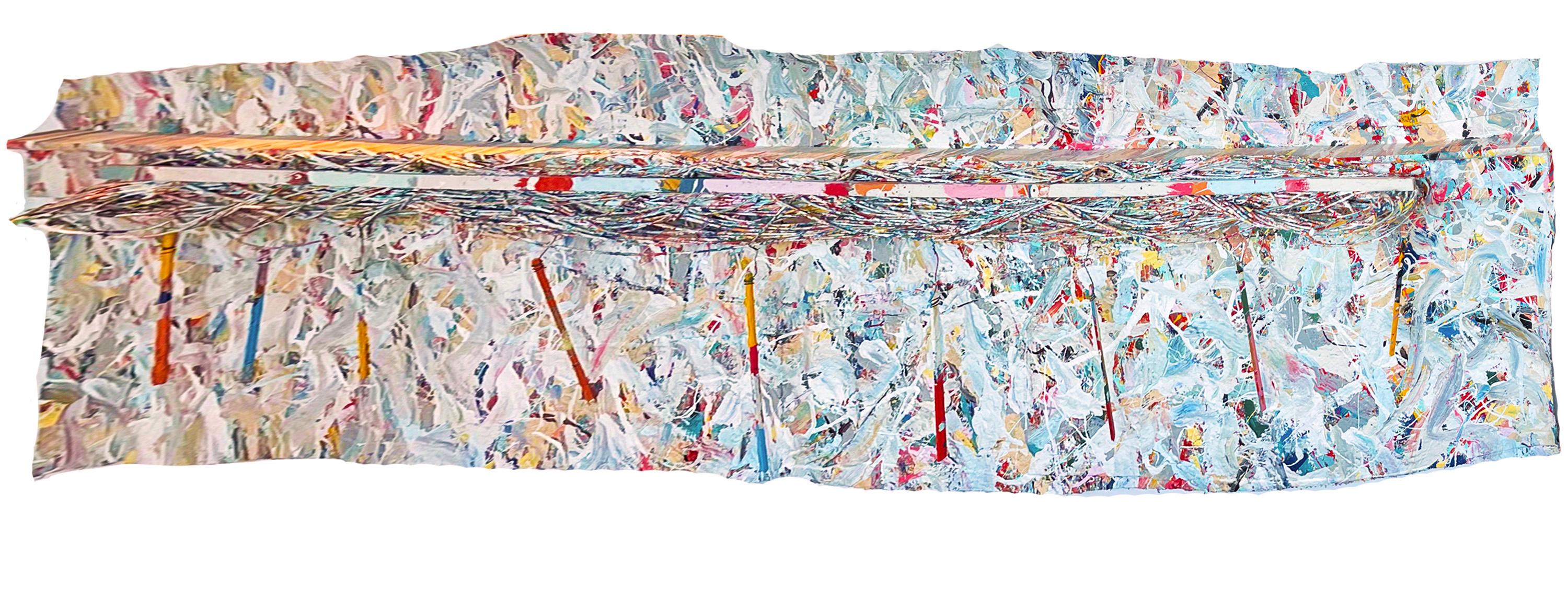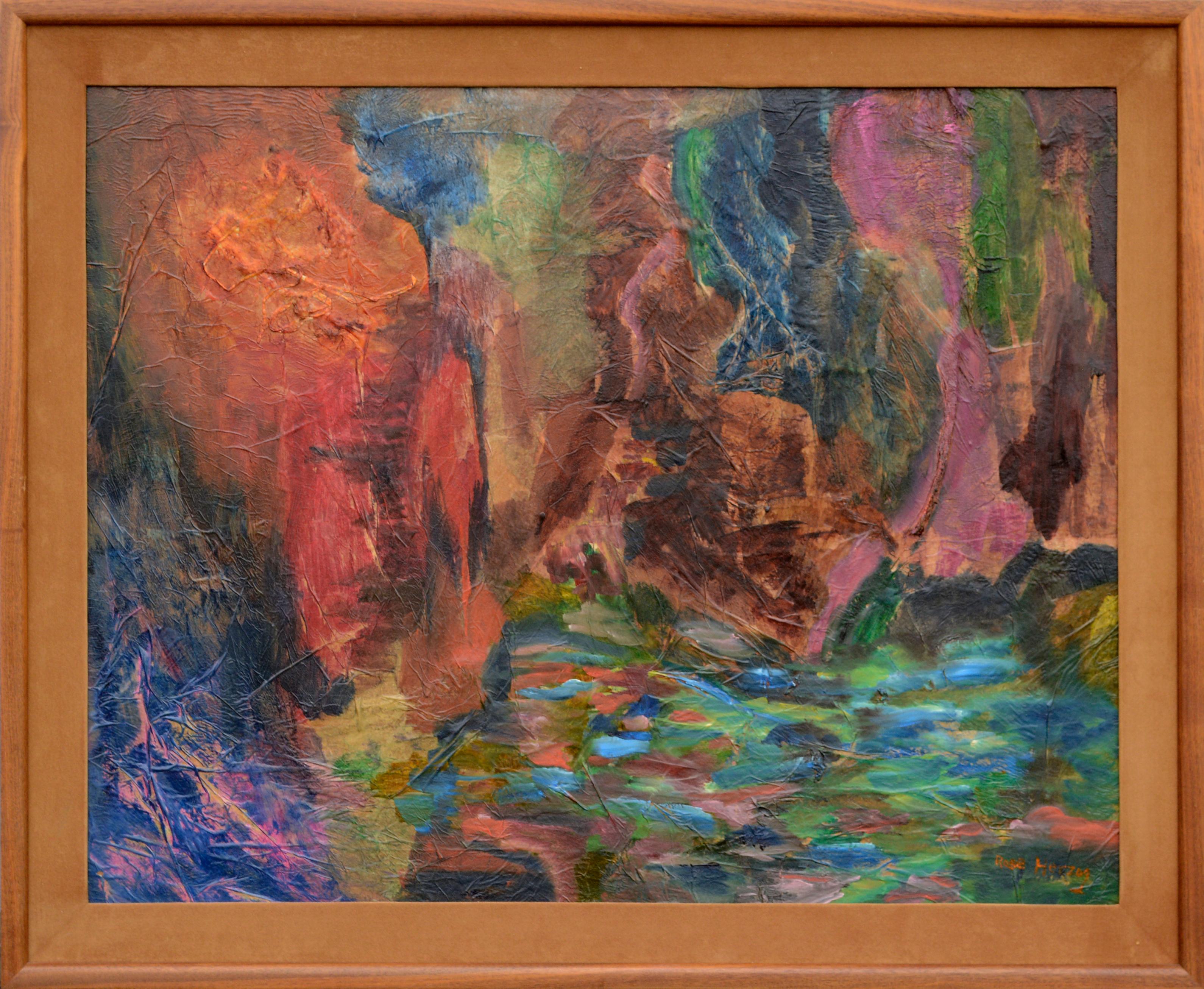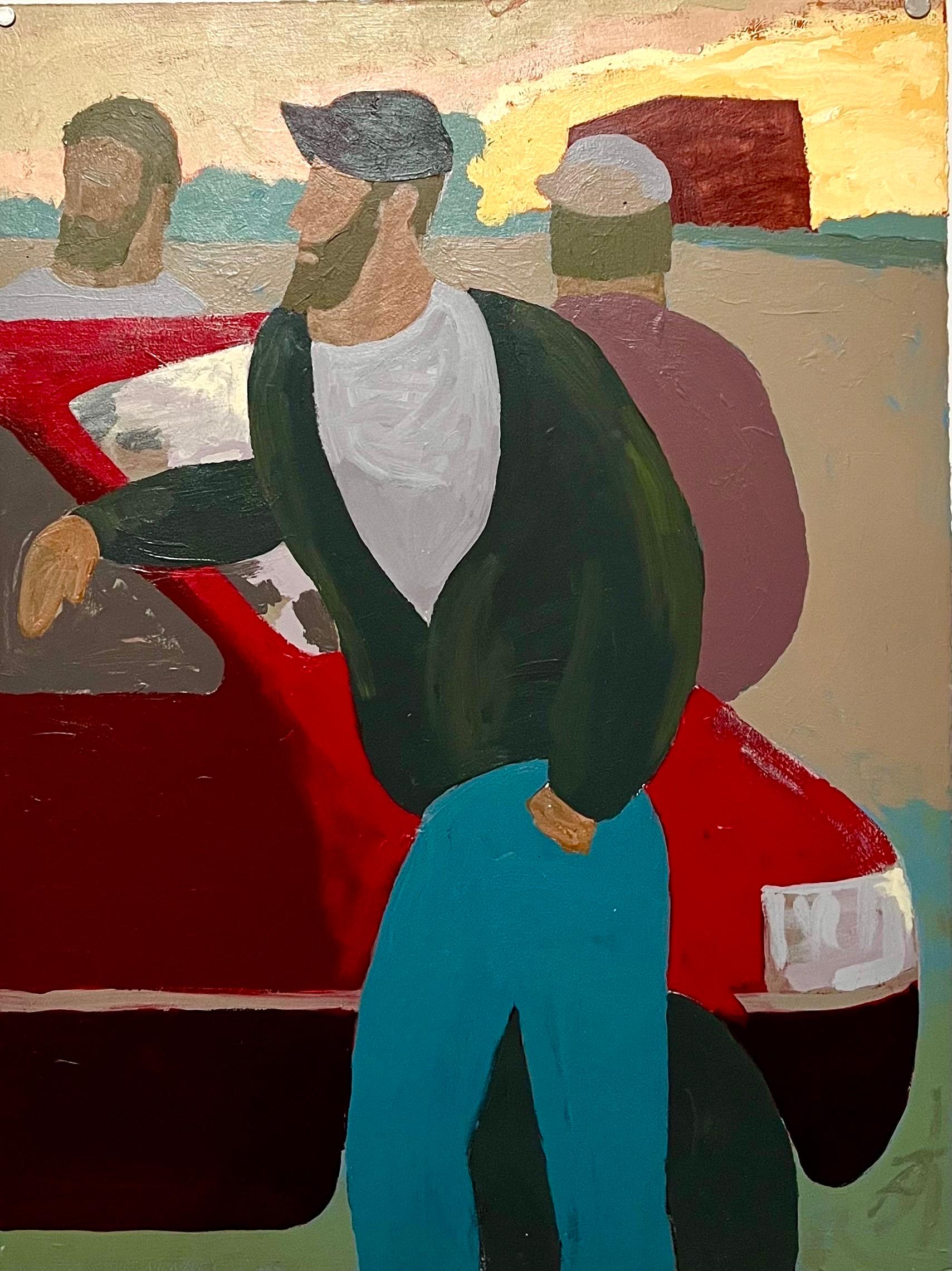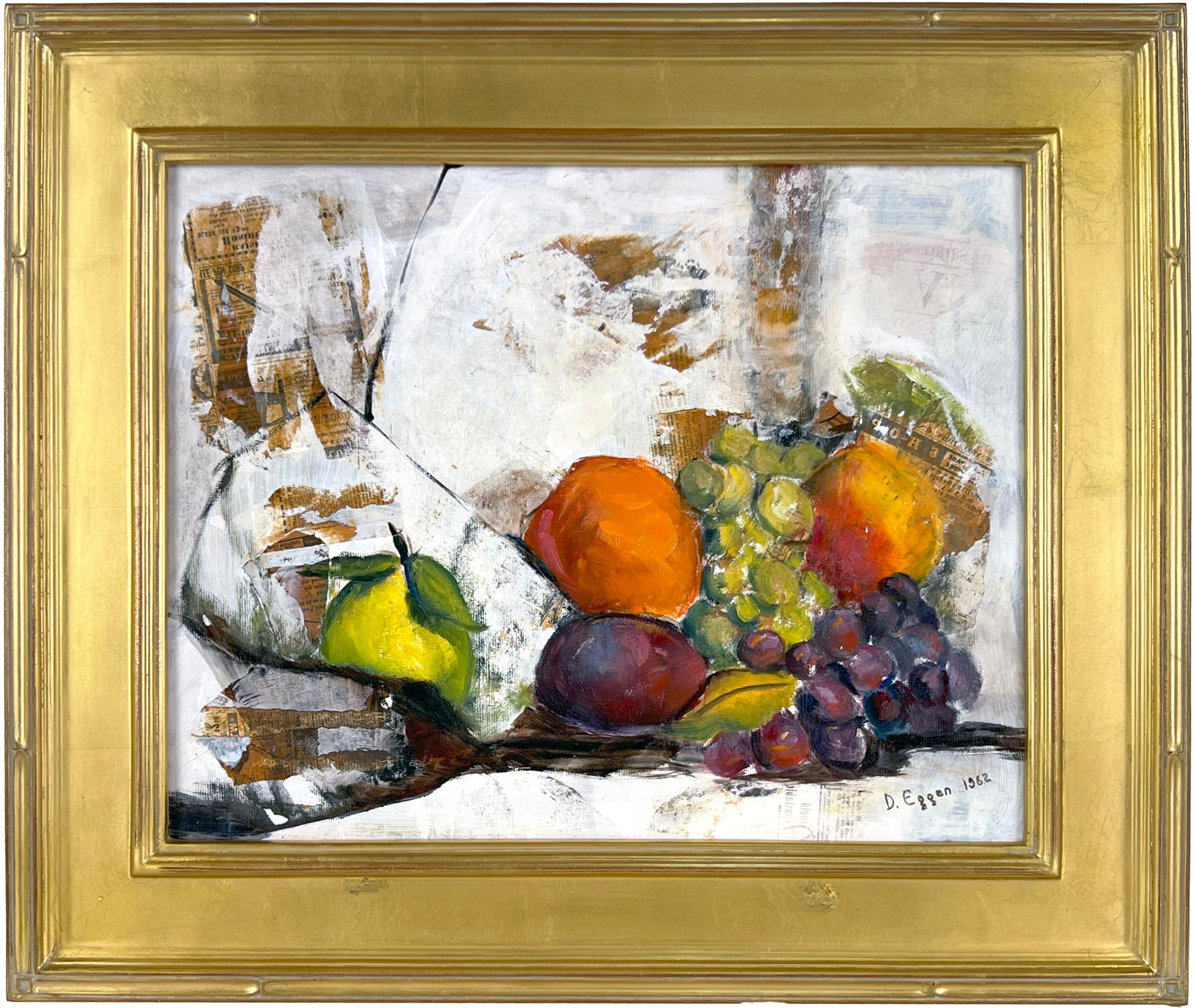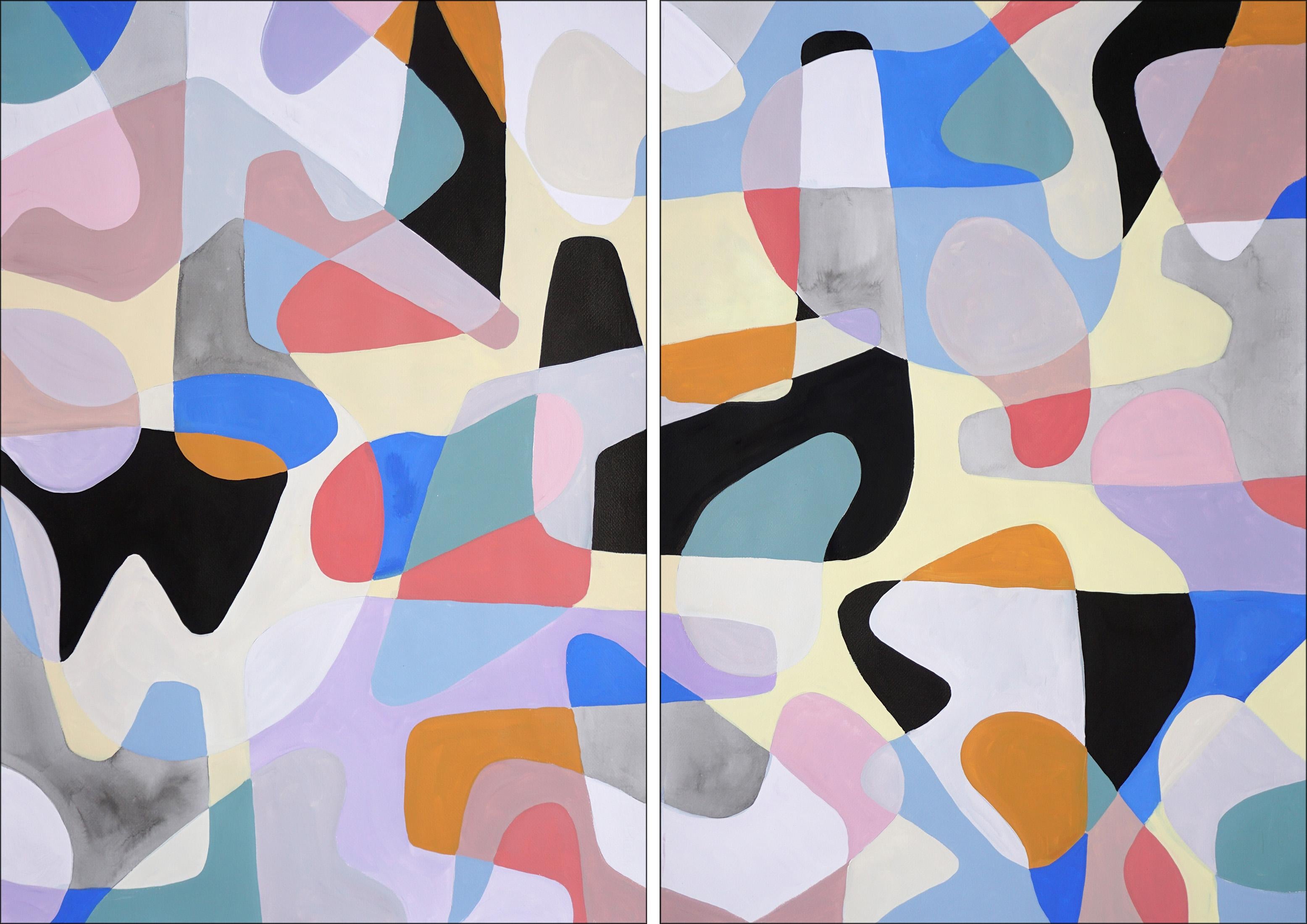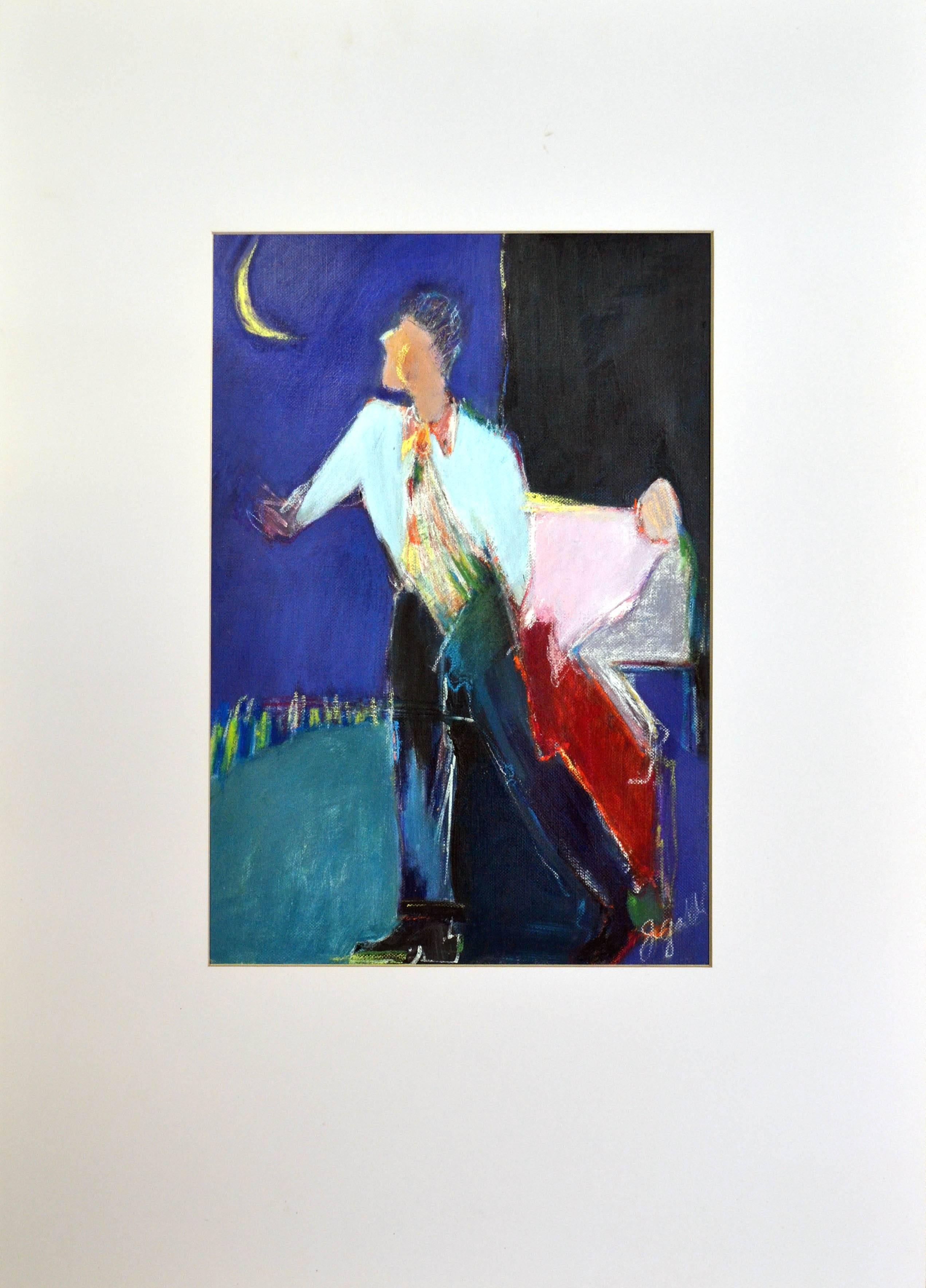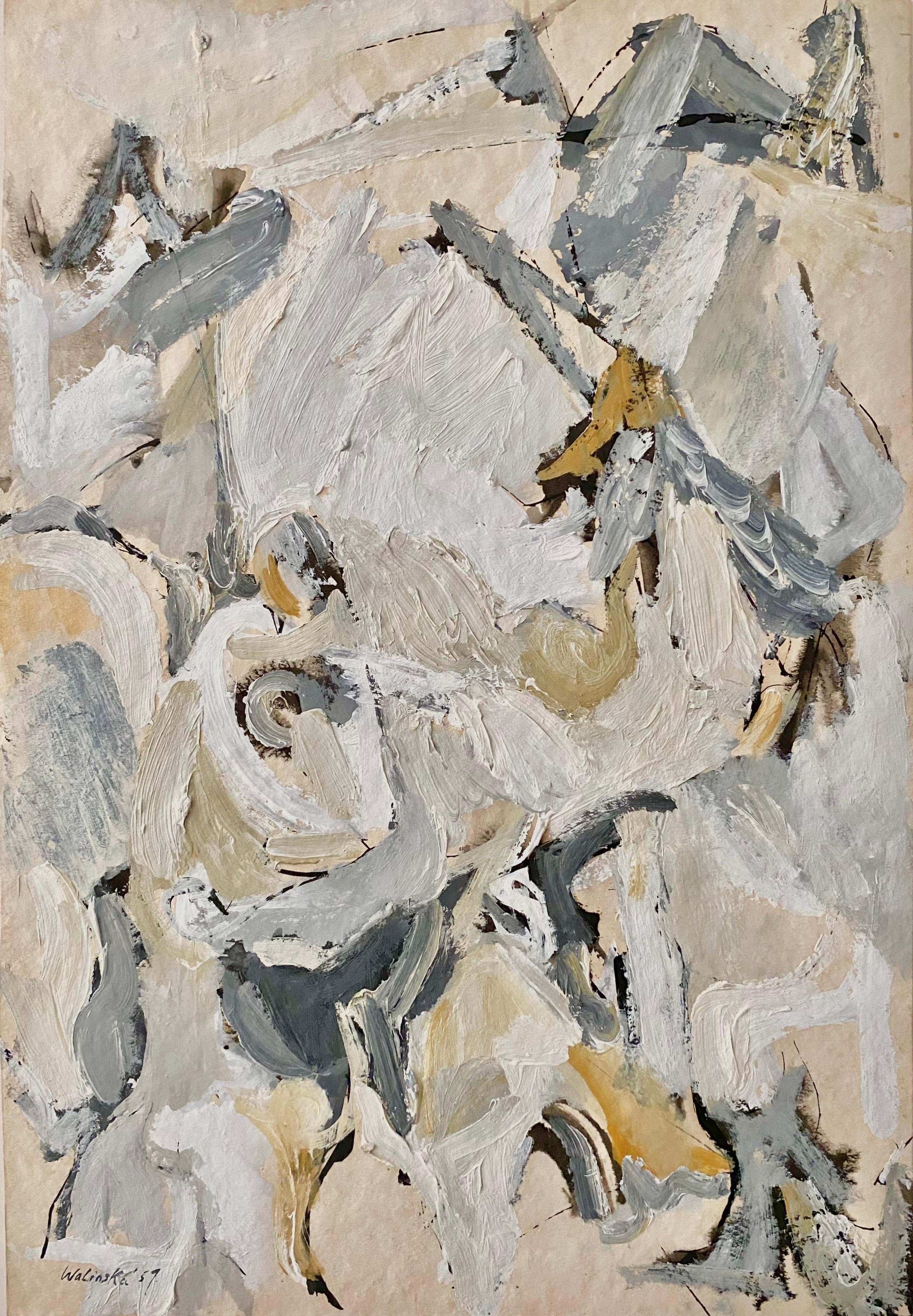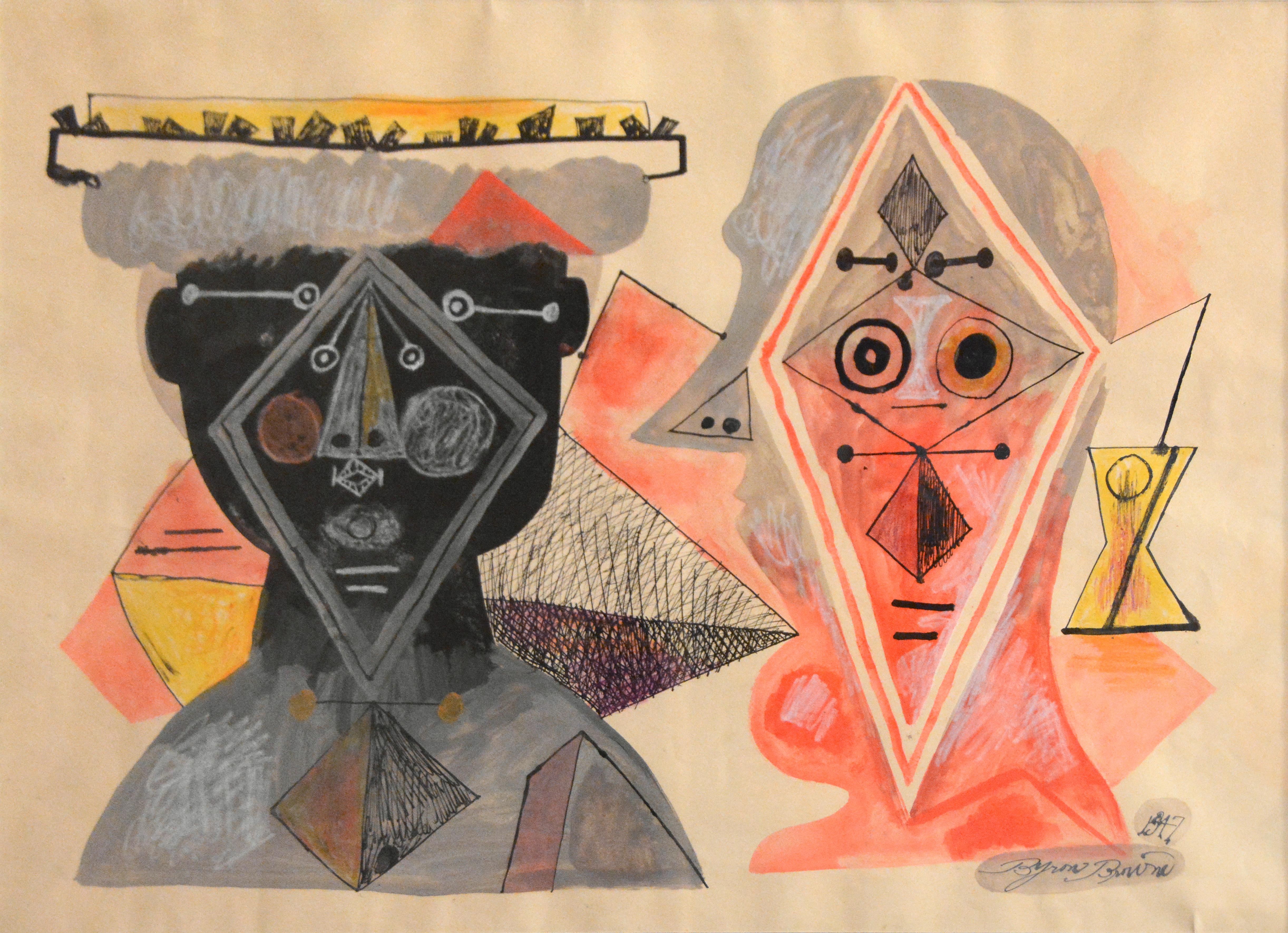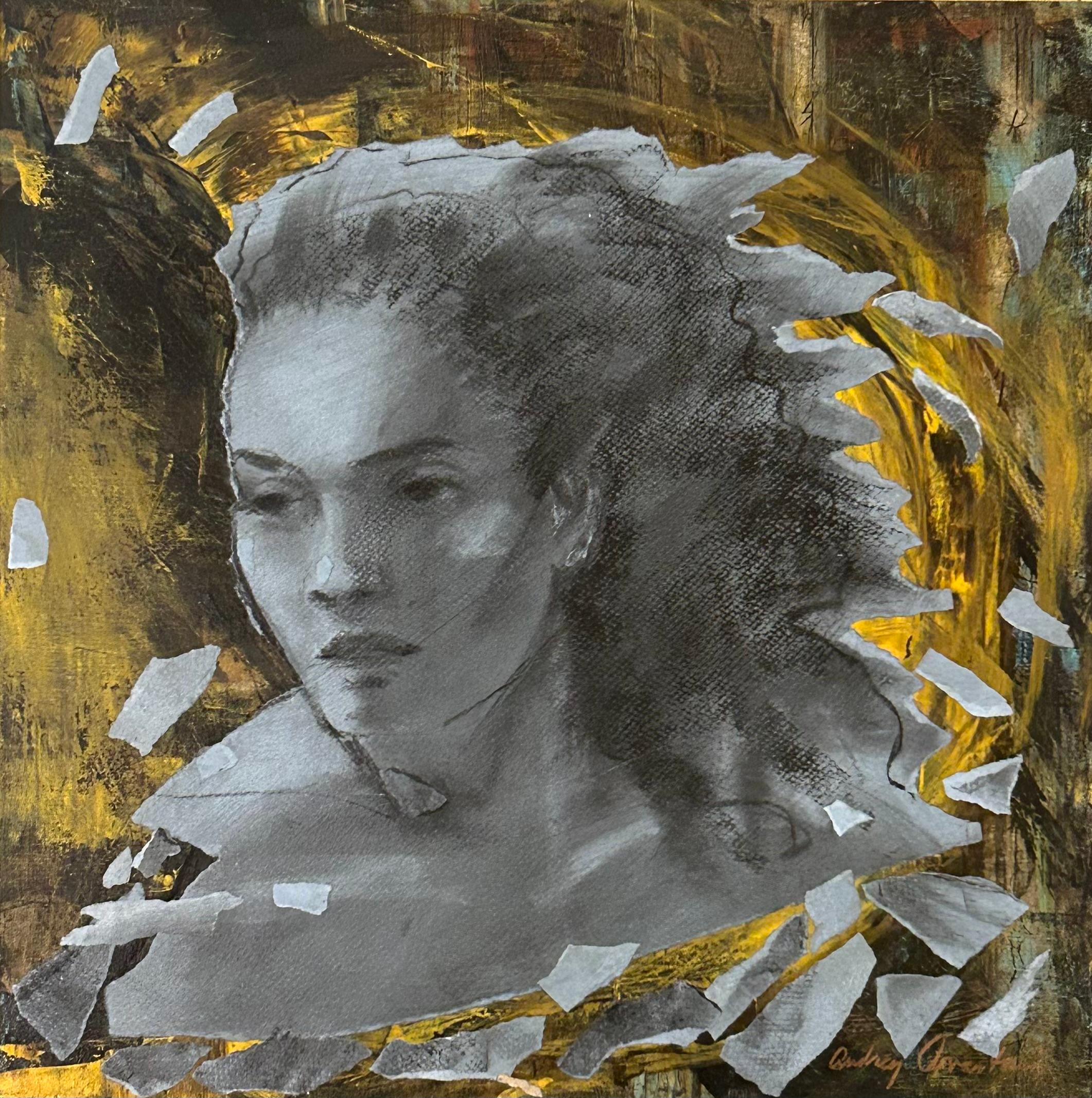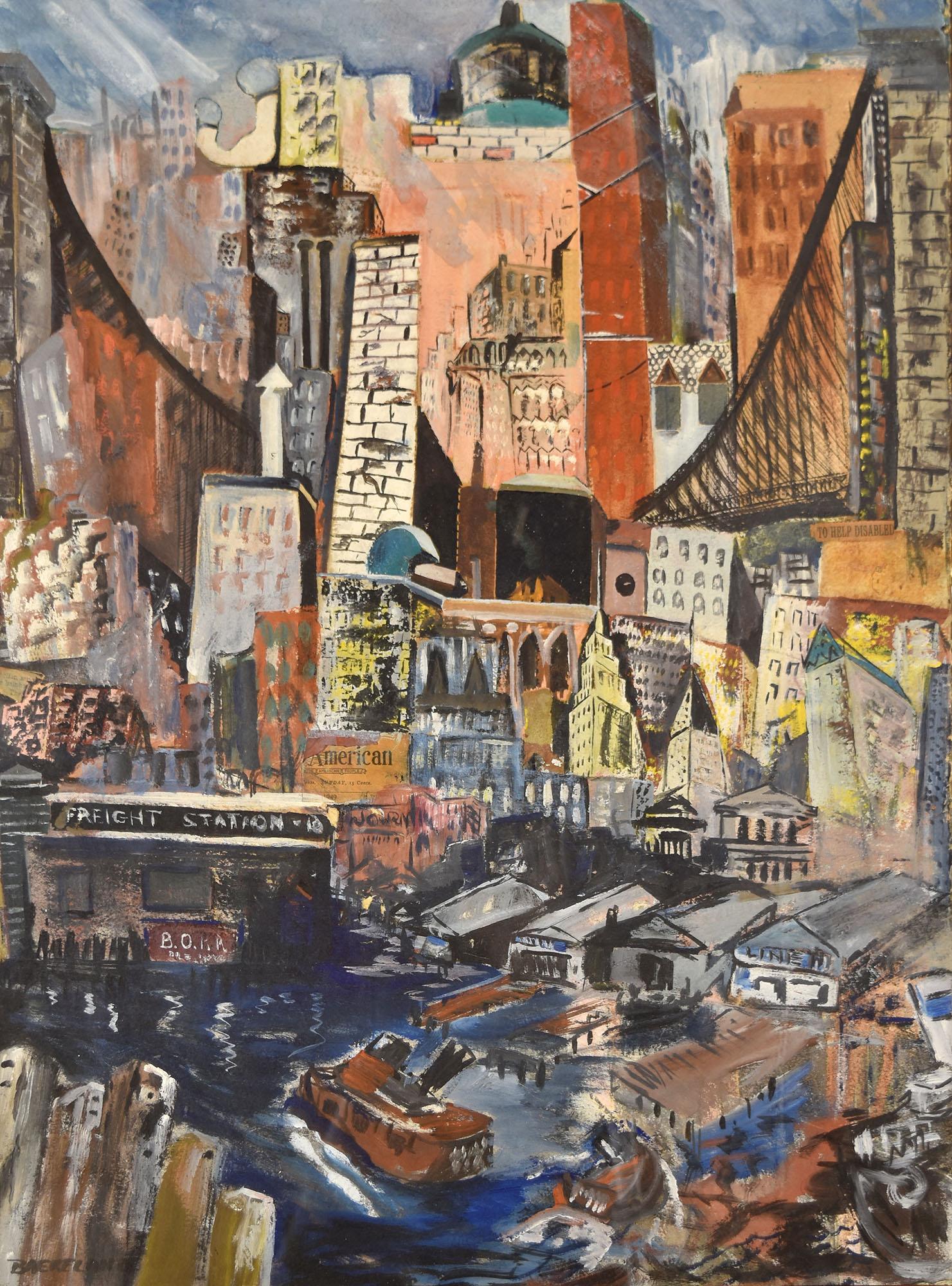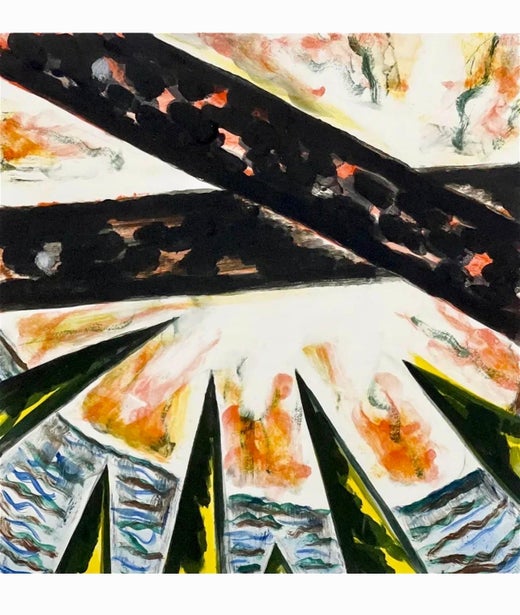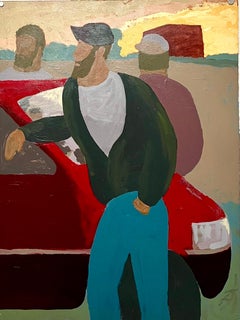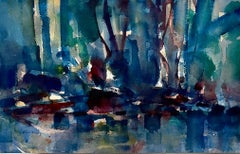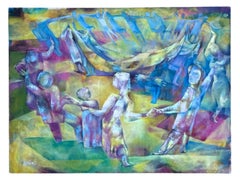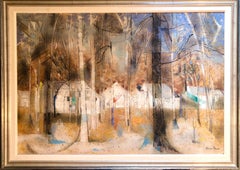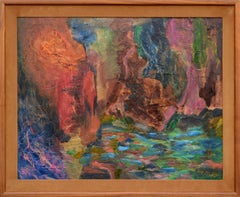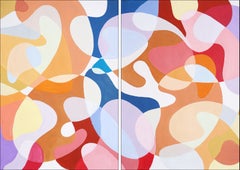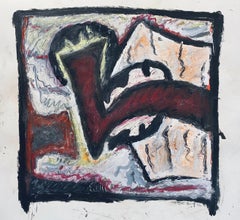
1981 Abstract Oil Painting Bold Colorful American Modernist Gregory Amenoff
View Similar Items
Want more images or videos?
Request additional images or videos from the seller
1 of 16
Gregory Amenoff1981 Abstract Oil Painting Bold Colorful American Modernist Gregory Amenoff1981
1981
Price:$1,500
$3,200List Price
About the Item
- Creator:Gregory Amenoff (1948, American)
- Creation Year:1981
- Dimensions:Height: 22.5 in (57.15 cm)Width: 28.4 in (72.14 cm)
- Medium:
- Movement & Style:
- Period:
- Condition:Minor edge wear. Please see photos.
- Gallery Location:Surfside, FL
- Reference Number:1stDibs: LU3826527132
Gregory Amenoff
Gregory Amenoff is a painter who lives in New York City and Ulster County, New York. He is the recipient of numerous awards from organizations including the American Academy of Arts and Letters, National Endowment for the Arts, New York State Council on the Arts and the Tiffany Foundation. He has had over fifty one-person exhibitions in museums and galleries throughout the United States and Europe. His work is in the permanent collections of more than thirty museums, including the Whitney Museum of America Art, the Museum of Fine Arts in Boston, the Museum of Modern Art in New York and the Metropolitan Museum of Art.
About the Seller
4.9
Platinum Seller
Premium sellers with a 4.7+ rating and 24-hour response times
Established in 1995
1stDibs seller since 2014
1,777 sales on 1stDibs
Typical response time: 1 hour
Authenticity Guarantee
In the unlikely event there’s an issue with an item’s authenticity, contact us within 1 year for a full refund. DetailsMoney-Back Guarantee
If your item is not as described, is damaged in transit, or does not arrive, contact us within 7 days for a full refund. Details24-Hour Cancellation
You have a 24-hour grace period in which to reconsider your purchase, with no questions asked.Vetted Professional Sellers
Our world-class sellers must adhere to strict standards for service and quality, maintaining the integrity of our listings.Price-Match Guarantee
If you find that a seller listed the same item for a lower price elsewhere, we’ll match it.Trusted Global Delivery
Our best-in-class carrier network provides specialized shipping options worldwide, including custom delivery.More From This Seller
View AllLarge Hudson River Figurative Modernist Landscape Oil Painting Edward Avedisian
By Edward Avedisian
Located in Surfside, FL
Edward Avedisian ( 1936-2007 )
Gouache or oil on paper, 3 guys around a car,
hand signed in paint lower left,
Measures 30"x 22.5"
Edward Avedisian (June 15, 1936, Lowell, Massachusetts – August 17, 2007, Philmont, New York) was an American abstract painter who came into prominence during the 1960s. His work was initially associated with Color field painting and in the late 1960s with Lyrical Abstraction and Abstract Expressionism.
He studied art at the School of the Museum of Fine Arts, Boston. By the late 1950s he moved to New York City. Between 1958 and 1963 Avedisian had six solo shows in New York. In 1958 he initially showed at the Hansa Gallery, then he had three shows at the Tibor de Nagy Gallery and in 1962 and 1963 at the Robert Elkon Gallery. He continued to show at the Robert Elkon Gallery almost every year until 1975.
During the 1960s his work was broadly visible in the contemporary art world. He joined the dynamic art scene in Greenwich Village, frequenting the Cedar Tavern on Tenth Street, associating with the critic Clement Greenberg, and joining a new generation of abstract artists, such as Darby Bannard, Kenneth Noland, Jules Olitski, and Larry Poons.
Avedisian was among the leading figures to emerge in the New York art world during the 1960s. An artist who mixed the hot colors of Pop Art with the cool, more analytical qualities of Color Field painting, he was instrumental in the exploration of new abstract methods to examine the primacy of optical experience.
One of his paintings was appeared on the cover of Artforum, in 1969, his work was included in the 1965 Op Art The Responsive Eye exhibition at the Museum of Modern Art and in four annuals at the Whitney Museum of American Art. His paintings were widely sought after by collectors and acquired by major museums in New York and elsewhere. He has been exhibited in prominent galleries, such as the Anita Shapolsky Gallery and the Berry Campbell Gallery in New York City. Edward Avedisian was known for his brightly colored, boldly composed canvases that combined Minimalism's rigor, Pop art exuberance and the saturated tones of Color Field painting.
Roberta Smith of the NYT writes of Avedesian: "Edward Avedisian helped establish the hotly colored, but emotionally cool, abstract painting that succeeded Abstract Expressionism in the early 1960s. This young luminary harnessed elements of minimalism, pop, and color field painting to create prominent works of epic proportions that energized the New York art scene of the time." In 1996 Avedisian showed his paintings from the 1960s at the Mitchell Algus Gallery, then in SoHo. His last show, dominated by recent landscapes, was in 2003 at the Algus gallery, now in Chelsea.
Selected Exhibitions:
Op Art: The Responsive Eye, at the Museum of Modern Art,
Whitney Museum’s Young America 1965
Expo 67, held in Montreal, Canada.
Six Painters (along with Darby Bannard, Dan Christensen, Ron Davis...
Category
20th Century American Modern Landscape Paintings
Materials
Oil, Gouache, Archival Paper
Modernist Abstract Expressionist Watercolor Painting Bauhaus Weimar Pawel Kontny
By Pawel Kontny
Located in Surfside, FL
Abstract watercolor composition bearing the influence of the earlier color-block compositions of Paul Klee.
Pawel August Kontny, (Polish-German-American artist) He was born in Laurahuette, Poland, in 1923, the son of a wealthy pastry shop owner. In 1939 he began studying architecture in Breslau where he was introduced to the European masters and to the work of some of the German Expressionists, soon afterward banned as "degenerate artists" and removed from museums throughout Germany by the Nazi regime. His studies were interrupted by World War II. Drafted into the German army, traveling in many countries as a soldier, he sketched various landscapes but in 1945, he was captured and held as a prisoner of war in Italy. After the war, he studied at the Union of Nuremberg Architects to help design buildings to replace ones destroyed in the war. He recorded his impressions of the local population and the landscapes through his watercolors and drawings. Pawel Kontny thereafter moved to Nuremberg, Germany, becoming a member of the Union of Nuremberg Architects and helping to rebuild the city's historic center. He soon decided to concentrate on his professional art career. He married Irmgard Laurer, a dancer with the Nuremberg Opera. Pavel Kontny 's career as an artist was launched with his participation in an all German exhibition, held at the Dusseldorf Museum in 1952. He held one-man shows in Germany, Switzerland and the United States. During his trip to the United States in 1960, Kontny became instantly enamored with Colorado, and decided to relocate to Cherry Hills with his wife and two children. He quickly established himself in the local art community, being affiliated for a time with Denver Art Galleries and Saks Galleries. His subject matter became the Southwest. During this time he received the Prestigious Gold Medal of the Art Academy of Rome. His extensive travel provided material for the paintings he did using his hallmark marble dust technique. he also worked equally in pastel, watercolor, charcoal and pencil-and-ink. in a style which merged abstraction and realist styles, influenced by Abstract Expressionist painting and South Western American landscapes. In the early 1960s he was one of only a few European-born professional artists in the state, a select group that included Herbert Bayer (1900-1985), a member of the prewar Bauhaus in Weimar and Dessau, Germany, and Roland Detre (1903-2001), a Hungarian modernist painter. As a Denver, Colorado resident, Pavel Kontny exhibited at galleries and museums throughout the United States, Germany and Japan. There, he was inspired by frequent trips to Native American pueblos in the Southwest, as well as by the study of the Plains Indians of Montana and Wyoming. Over the years Kontny had a number of students and generously helped young artist by hosting exhibitions at his Cherry Hills home. For many years he generously donated his paintings to support charitable causes in Denver. Influences during his European years included German pastelist C.O. Muller, German Informel painter Karl Dahmen and Swiss artist, Hans Erni. In the early 1950s his painting style showed the influence of the Die Brücke (The Bridge), a group of German expressionist artists formed in Dresden in 1905 who had a major impact on the evolution of modern art in the twentieth century in Germany. By the middle of the decade his style incorporated more referential abstraction and total abstraction, resulting in part from his study of Hans Hartung, a German artist based in Paris who exhibited his gestural abstract work in Germany. The American moon landing in 1969 inspired Paul Kontny...
Category
20th Century American Modern Landscape Paintings
Materials
Canvas, Oil
Joseph Wolins WPA Artist Dancing, Torah Modernist Judaica Cubist Oil Painting
By Joseph Wolins
Located in Surfside, FL
Joseph Wolins 1915-1999
Subject: Jewish, Dancing with the Torah (New Torah, Simchat Torah)
Hand signed oil painting
In this painting, Joseph Wolins uses vibrant and complimentary co...
Category
20th Century American Modern Figurative Paintings
Materials
Canvas, Oil
American Woman Artist Modernist Large Oil Painting Cubist Influenced Landscape
By Lena Gurr
Located in Surfside, FL
A beautiful wooded landscape scene with houses and trees.
Painted on a masonite board. hand signed lower right. with framers label verso.
Framed to 40 X 55 inches. 33 X 48 without the frame and mat.
It is not dated.
Lena Gurr (1897–1992), was an American woman artist who made paintings, prints, and drawings During the course of her career Gurr's compositions retained emotional content as they evolved from a naturalistic to a semi-abstract cubist style. Born into a Russian-Jewish Yiddish speaking immigrant family, she was the wife of Joseph Biel, also Russian-Jewish and an artist of similar genre and sensibility. Gurr used Lena Gurr as her professional name. After marrying Joseph Biel she was sometimes referred to as Lena Gurr Biel. Biel had been born in Grodno, Poland (later absorbed into Russia) and had lived in England, France, and Australia before coming to New York. An artist, he specialized in landscape paintings and silkscreen printing as well as photography. He studied art at the Russian Academy in Paris. After immigrating to the United States, he studied under George Grosz at the Arts Students League.
Gurr was born in Brooklyn and, apart from brief stays in Manhattan and in Paris, lived there her whole life. This painting bears the influence of Lyonel Feininger an influential German American artist. Gurr began studying art at a young age. In 1919 she studied painting and printmaking at the Educational Alliance Art School and between 1920 and 1922 she won a scholarship to attend the Art Students League where she took classes with John Sloan and Maurice Sterne.
In 1926 and 1928 Gurr participated in group shows at the Whitney Studio Club in Greenwich Village and in 1928 she also participated in the 12th annual exhibition of the Society of Independent Artists at the Waldorf Roof in New York. (Reviewing this show, Helen Appleton Read, the critic for the Brooklyn Daily Eagle, said "I made three discoveries on my first visit, Thomas Nagel, Eugenie McEvoy and Lena Gurr with two figure compositions which have something of Marie Laurencin or Helene Perdriat quality of naive sophistication.") The Waldorf Roof was a set of rooms on the top floor of the Waldorf Astoria Hotel, one of which had glass sides and a glass roof. The rooms were used for concerts, dances, benefits, and exhibitions.From 1929 to 1931 Gurr took a leave of absence from her teaching position to travel in France with Joseph Biel, an artist whom she had met while studying at the Art Students League. They spent time in Nice and Mentone but mainly in Paris.
During the early months of 1931, while she was still abroad, her work appeared in group exhibitions held at the R. H. Macy department store and the Opportunity Gallery (opened by Gifford Beal). In 1932 she participated in three shows: a solo exhibition at the Brooklyn Museum, an annual exhibition of the New York Society of Women Artists, ( Its first president was Marguerite Zorach. Founding members included Agnes Weinrich, Anne Goldthwaite...
Category
Mid-20th Century American Modern Landscape Paintings
Materials
Oil, Panel
Abstract Procession Jewish Wedding Chuppah Oil Painting Modernist Judaica
By Sabina Teichman
Located in Surfside, FL
Genre: Modern
Subject: Abstract
Medium: Oil
Surface: Canvas
Country: United States
Sabina Teichman: (1905-1983) Studied at Columbia Univ. (BA, MA), also with Charles J. Martin and Arthur J. Young.
Exhibits include WMAA, Art USA, 1958, PAAM, Butler Institute Amer. Art, Audubon Artists Ann., Womens Westchester Center.
Sabina Teichman's paintings have a touch of fauvist vitality and responsiveness and color. Her Lyrical Paintings convey the great joy of life which is hers. the joy is so profound that it cannot be obtained in traditional art forms and so it has become necessary for Sabina to create new forms to express the euphoria. As the dynamic colors emerge from her luxuriously coated brush, she surrenders to a newly realized adventure in abstract expressionism. A boldness belies he femininity which yields an exciting style and a joyful freshness. Sabina Teichman illuminates the canvas with strokes of color that affect the very soul of the viewer , for she feels that color inspires the inner being of man. Her response to color elation.
Dynamic colors emerge from the luxuriously coated brush of this artist, surrendering to her newly realized adventure in abstract impressionism. A boldness belies her femininity which yields an exciting style and a joyful freshness. Sabina Teichman illuminates the canvas with strokes of color that affect the very soul of the viewer, for she knows as did Goethe, that color inspires the inner being of man.
Sabina Teichman's own response to color is elation. Widely known as a figurative painter, one reviews her earlier style only to find that all shapes lived within the surrounding of abstract settings which now dominate her most recent paintings.
The Vatican Museum's collection of contemporary art has acquired Sabina Teichman's painting The Prophet given in response to an expressed desire of a representative of Pope Paul VI, who said that, to the best of his knowledge, it was the first painting by a living American to become part of the Vatican. Member of Audubon Artists, Provincetown Art Association
Argent Galleries, New York, 1947.
Salpeter Gallery, New York, 1949, 1952, 1954. Shore Galleries, Boston, 1955.
A C A Gallery, New York, 1957, 1960, 1963, 1969. A C A Gallery, Rome, 1965.
Orpheus...
Category
1950s American Modern Figurative Paintings
Materials
Canvas, Oil
Large Richard Merkin Painting Harlem Jazz Club, New Yorker Magazine Cover Artist
By Richard Merkin
Located in Surfside, FL
Richard Marshall Merkin (American, 1938-2009)
Gladys and Half-Pint
Hand signed 'Merkin' (center right),
Titled, inscribed, dated, and initialed 'GLADYS BENTLEY AND FRANKIE 'HALF-PINT' JAXON 1997/R.M.' verso.
Oil on canvas
37 1/2 x 72 in. (95.3 x 182.9 cm)
framed 39 1/4 x 74 x 2 in.
Gladys Alberta Bentley (August 12, 1907 – January 18, 1960) was an American blues singer, pianist, and entertainer during the Harlem Renaissance. Her career skyrocketed when she appeared at Harry Hansberry's Clam House, a well-known gay speakeasy in New York in the 1920s, as a black, lesbian, cross-dressing performer. She headlined in the early 1930s at Harlem's Ubangi Club, where she was backed up by a chorus line of drag queens. She dressed in men's clothes (including a signature tailcoat and top hat), played piano, and sang her own raunchy lyrics to popular tunes of the day in a deep, growling voice while flirting with women in the audience. On the decline of the Harlem speakeasies with the repeal of Prohibition, she relocated to southern California, where she was billed as "America's Greatest Sepia Piano Player" and the "Brown Bomber of Sophisticated Songs". She was frequently harassed for wearing men's clothing. She tried to continue her musical career but did not achieve as much success as she had had in the past. Bentley was openly lesbian early in her career, but during the McCarthy Era she started wearing dresses and married, claiming to have been "cured" by taking female hormones.
Frankie "Half-Pint" Jaxon, born Frank Devera Jackson was an African American vaudeville singer, stage designer and comedian, popular in the 1920s and 1930s. He was born in Montgomery, Alabama, orphaned, and raised in Kansas City, Missouri. His nickname of "Half Pint" referred to his 5'2" height. He started in show business around 1910 as a singer in Kansas City, before travelling extensively with medicine shows in Texas, and then touring the eastern seaboard. His feminine voice and outrageous manner, often as a female impersonator, established him as a crowd favorite. By 1917 he had begun working regularly in Atlantic City, New Jersey and in Chicago, often with such performers as Bessie Smith and Ethel Waters, whose staging he helped design.
He served slightly less than a year in the United States Army in 1918–1919 and rose to the rank of sergeant. In the late 1920s he sang with top jazz bands when they passed through Chicago, working with Bennie Moten, King Oliver, Freddie Keppard and others. He performed and recorded with the pianists Cow Cow Davenport, Tampa Red and "Georgia Tom" Dorsey, recording with the latter pair under the name of The Black Hillbillies. He also recorded with the Harlem Hamfats. In the 1930s, he was often on radio in the Chicago area, and led his own band, titled Frankie "Half Pint" Jaxon and His Quarts of Joy. Jaxon appeared with Duke Ellington in a film short titled Black and Tan (1929), and with Bessie Smith in "St. Louis Blues" (1929). Cab Calloway's "Minnie the Moocher" (1931) is based both musically and lyrically on Jaxon's "Willie the Weeper" (1927).
Richard Merkin, Sometimes described as Rhode Island’s most famous New York artist, Richard Merkin has led a dual life for nearly 40 years - teaching at RISD while enjoying a celebrated painting career based in New York City. He has exhibited in countless gallery and museum shows in the US and abroad and is represented in the permanent collections of the Smithsonian Institution, The Museum of Modern Art, the Whitney Museum, the RISD museum and many others. In addition to contributing drawings and paintings to The New Yorker (along with, Art Spiegelman, Saul Steinberg, Harper’s, The New York Times Sunday Magazine and several books on Erotica and Baseball, he is a contributing editor for Vanity Fair and a former style columnist for GQ. Merkin’s honors include a Tiffany Foundation Fellowship and the Rosenthal Foundation Award from the American Academy of Arts and Letters.
Museums and Selected Collections :
The American Federation of Arts, New York, NY
Brooklyn Museum, Brooklyn, NY
Chrysler Museum of Art, Norfolk, VA
First city Bank, Chicago, Ill
Fisk University Art Gallery, Nashville, TN
Hallmark Collections, Kansas City, MO
Massachusetts Institute of Technology, Cambridge, MA
Maimi-Dade Junior College, Miami, FL
Michigan State University, East Lansing, MI
Minnesota Museum of Art, Minneapolis, MN
Museum of Modern Art, New York, NY
Museum of Art, Rhode Island School of Design, RI
McClung Museum, University of Tennessee, Knoxville, TN
Pennsylvania Acadamy of the Arts, Philadelphia PA
Prudential Insurance Company, Boston, Ma
Prudential Insurance Company, Newark, NJ
Rose Art Museum, Brandeis University, Waltham, MA
Sara Robey Foundation, New York, NY
Smithsonian Institution, Washington, DC
State University of Brockport, Brockport, NY
Whitney Museum of American Art, New York, NY
Selected Publications :
1986-Present Contributing Editor, Vanity Fair ..1988-Present, New Yorker... 1988-Present, style column, GQ...1997, Text and Illustration for The Tijuana Bibles, published by Simon & Shuster, 1995, Illustrated book, Leagues Apart: the Men and Times of the Negro Baseball Leagues published by Morrow.
1967 Cover of the Beatles “Sgt. Peppers Lonely Hearts Club Band” Album (Mr. Merkin appears in the back row, right of center)
RISD: MFA in Painting, 1963; Professor, Department of Painting
special skill: Merging his role as flaneur (connoisseur of city life) with his role as painter and social historian, Merkin retrieves lost cultural artifacts – a Turkish cigarette, a gangster, a bowler and generally “things most people don’t know about” – and reconstitutes their Jazz Age virtues on canvas in cubist, comic-laced landscapes of tropical color. (ala Robert Crumb and Ben Katchor)
breaking in: Perpetually on the fly from his middle-class Brooklyn background, Merkin found the perfect escape in the mid ‘60s in George Frazier, a dapper Boston columnist who inspired the emerging New York painter’s overnight reinvention of himself. The elements of structure, stability and surprise he admired in this well-dressed dandy – a cool linen suit, a splash of suspender, a polka dot scarf and pearl-handled walking stick – soon surfaced in paintings peopled by impeccable underdogs of café society along with his personal pop heroes: William Burroughs, Bobby Short and Krazy Kat...
Category
1990s American Modern Abstract Paintings
Materials
Canvas, Oil Pastel, Oil
You May Also Like
Abstract Horizontal
Located in Missouri, MO
Ken Anderson (20th century) was active/lived in United States. Ken Anderson is known for Abstract hanging sculpture.
*See included images and video
Category
1980s American Modern Abstract Paintings
Materials
Canvas, Wood, Mixed Media, Oil, Handmade Paper
Price Upon Request
Shimmering Pond in the Woods - Surrealist Abstract 1960s
By Rose Herzog
Located in Soquel, CA
Shimmering Pond in the Woods - Surrealist Abstract 1960s
Highly textured abstract composition by Rose Herzog (American, mid-20th Century). A multicolored pond is shown in the middle...
Category
1960s American Modern Abstract Paintings
Materials
Cotton, Masonite, Mixed Media, Oil, Tissue Paper
Still Life of Fruit on Table Style of Paul Cézanne
Located in Soquel, CA
Modern Cézanne style still life with collage by Dorothy Jane (Milne) Eggen (American, 1907-1986) Her still life is a Homage to Paul Cézanne's ...
Category
1960s American Modern Still-life Paintings
Materials
Canvas, Oil, Illustration Board, Newsprint
$2,120 Sale Price
20% Off
Rainbow Curves, Painter's Palette Translucent Shapes, Large Diptych on Paper
By Ryan Rivadeneyra
Located in Barcelona, ES
This is a modernist-inspired painting, drawing influence from the bold creativity of 1950s, 60s, and 70s art. The composition features overlapping painter’s palette silhouettes, crea...
Category
2010s American Modern Abstract Paintings
Materials
Oil, Paper
Shuffled Modernist Forms Diptych, Avantgarde Overlapping Shapes in Pastel Tones
By Ryan Rivadeneyra
Located in Barcelona, ES
This is a modernist-inspired painting, drawing influence from the bold creativity of 1950s, 60s, and 70s art. The composition features overlapping painter’s palette silhouettes, crea...
Category
2010s American Modern Abstract Paintings
Materials
Paper, Oil
Man With Moon - Figurative Abstract
By J Gold
Located in Soquel, CA
Compelling abstract figurative oil painting in bold, primary colors of a man and the moon by J. Gold (American, 20th Century). Signed "J. Gold" lower right. Presented in a Maple woo...
Category
1980s American Modern Figurative Paintings
Materials
Paper, Oil
$700 Sale Price
20% Off
